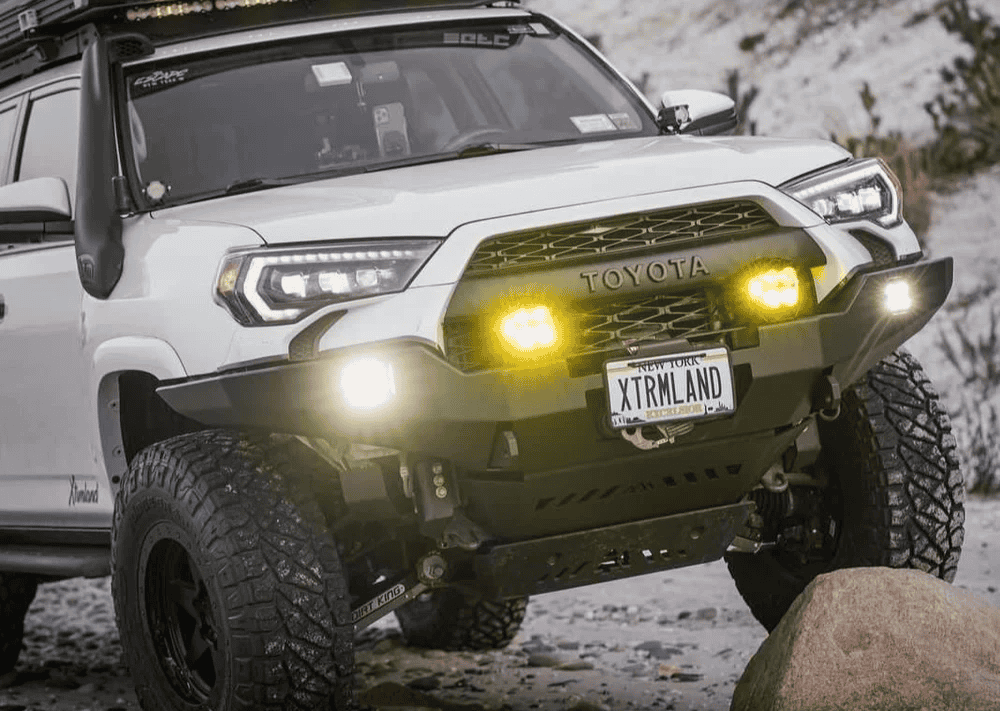Overland Vehicles

An overland canopy is more than a bed cover. It is a structural topper designed to carry live loads on rough terrain while keeping the cargo area secure, weather tight, and organized. Compared to a basic topper, an overland canopy uses reinforced frames, metal skins or honeycomb panels, and integrated tracks or bars that accept racks, awnings, and rooftop tents.
Load rating matters. A canopy should publish both dynamic and static roof capacities. Dynamic ratings reflect motion on washboards and highway crosswinds. Static numbers cover parked loads like two people in a tent. For a rooftop tent and gear, many owners aim for around two hundred pounds dynamic and six hundred or more static, but always confirm the exact figures from the builder.
Sealing separates a trail ready canopy from a street only shell. Expect perimeter bulb seals, tailgate edge seals, and a strategy for dust control. A front boot or compression seal near the cab, plus a pressure vent, helps reduce dust intrusion in silt beds. Weather protection also includes drip rails and window latches that resist flex under vibration.
Modularity pays off in the long run. Inside, tie points, molle panels, and T slot channels let you mount shovels, recovery boards, and drawers without drilling new holes every season. Outside, track systems make it simple to shift a crossbar to clear a solar panel or kayak. The best setups shift from weekday duty to a long weekend without wrenching for hours.
Ford trucks bring unique fitment considerations to the canopy decision. Older steel body F 150s and newer aluminum body trucks differ in weight balance, but canopy fitment still follows bed length and rail geometry. An f 150 cap for a five and a half foot bed will not fit a six and a half foot bed, even within the same generation. Measure twice and confirm latch and window cut patterns for the correct model year.
A ford f 150 truck bed cap intended for road use often relies on light duty clamp mounts and minimal roof structure. For trail use, look for reinforced corners, thicker frames, and through bolted tracks. Lighting and wiring matter as well. A third brake light, bed lights, and a twelve volt feed for a fridge or air compressor should run through proper grommets with chafe protection, then to a fused distribution block.
The ford raptor camper shell deserves special attention. Wider fenders do not change bed dimensions, but wheel travel and terrain speed put more stress into the canopy. A ford raptor camper top benefits from higher dynamic roof capacities, stronger mounting hardware, and anti vibration isolation at contact points. If you run a full size spare or fuel on top, verify those loads against the dynamic rating, not just the static figure.
Rooftop tents add both weight and leverage. When the tent sits high on crossbars, it moves the center of gravity and adds side loads during off camber driving. Choose a canopy with continuous track rails tied into the frame, not just surface mounted brackets. Keep heavy items low in the bed to maintain handling.
Most canopies use clamp on mounts. For heavy off road use, some owners add bolt in plates under the rail to spread the load. Sealing should include a tailgate kit and a front seal near the cab. A small pressure vent in the canopy creates slight positive pressure at speed to reduce dust. Add foam blocks in stake pockets to close hidden gaps.
Aluminum canopies balance strength and weight, resist corrosion, and accept powder coat. Composite shells save weight but need reinforced hard points for racks. Steel frames are durable and easy to repair but add mass up high. The goal is a canopy that survives washboard without loosening hardware while keeping weight reasonable for braking and ride quality.
Plan wiring early. A dedicated power line from the battery or auxiliary system should feed a fused panel inside the bed. From there, branch to canopy lights, USB ports, a fridge outlet, and a work light at the rear door. If you add solar, route the panel leads through waterproof glands and strain reliefs into a charge controller near the battery.
Storage drives daily usability. Low drawers keep heavy tools and recovery gear near the axle. Side access doors help grab small items without crawling into the bed. Ventilation reduces condensation when a wet tent rides home. Finally, consider height in garages and ferry restrictions once a tent, shovel, and awning live up top. Expect a small hit to fuel economy and some wind noise, which better sealing and deflectors can minimize.
When you are ready to translate this checklist into a truck that works on the highway and on rough trails, our team in Fayetteville builds canopy systems that match your routes and your Ford. Explore complete builds and inspiration on our main rigs page here: Explore overland rigs. If you already own a truck and want a smarter topper, see how a tailored upgrade comes together: Custom overland upfit. Curious about how we approach design, fitment, and testing before handoff, start here: Why choose OZK Customs.
Ready to turn your ideas into a canopy that carries the load, stays quiet on the interstate, and seals tight against dust. Share your Ford details and your travel goals and we will map the right structure, mounts, wiring, and storage to suit your truck and your miles.
Your truck deserves a canopy that works as hard as you do. OZK Customs designs and installs complete overland canopy systems with wiring, racks, and sealing dialed for real use. Tell us how you travel, and we will build a solution that fits your Ford and your routes.
ADDRESS:
6159 E Huntsville Rd, Fayetteville, AR 72701
PHONE:
(479) 326-9200
EMAIL:
info@ozkvans.com